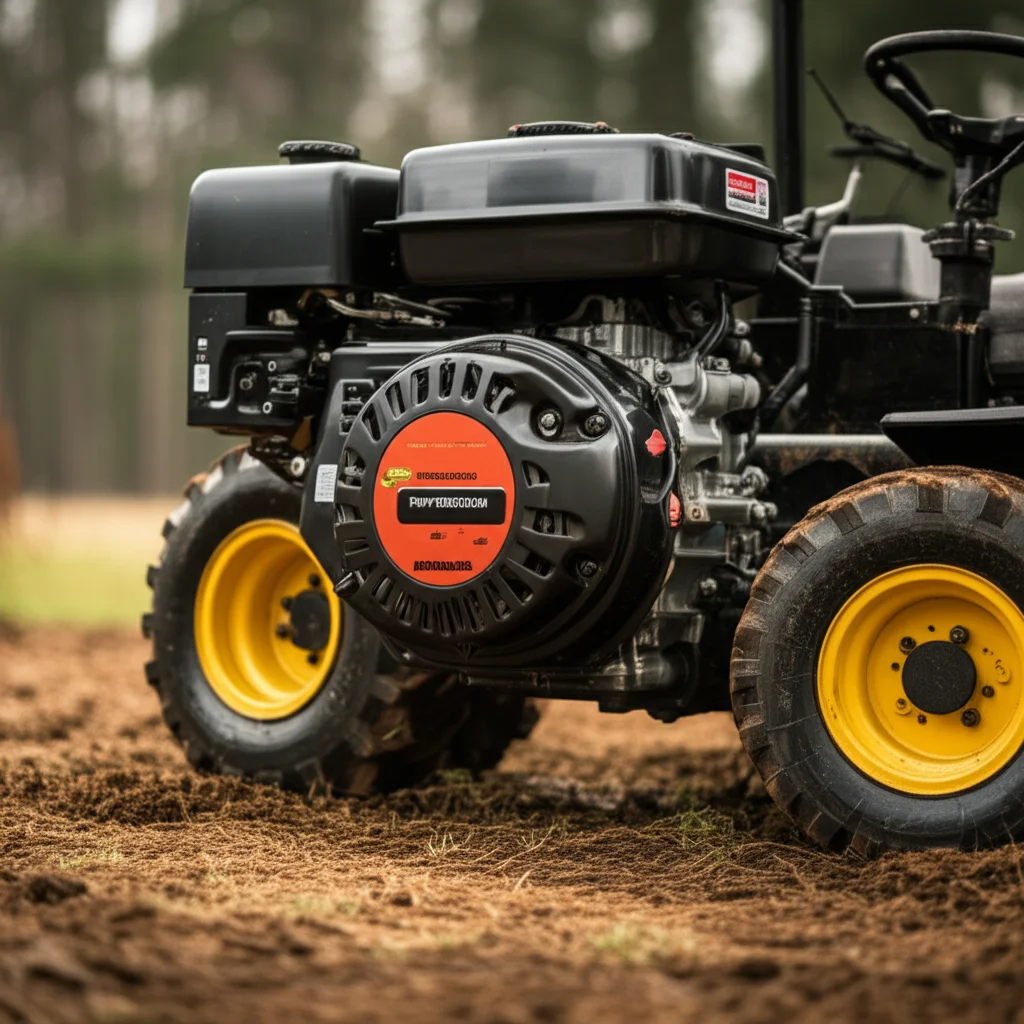· Lawn Mower Repair · 6 min read
Hydrostatic Transmission Whining Noise

A Whining Hydrostatic Transmission: What’s Going On?
Have you noticed a high-pitched whining sound coming from your riding mower or tractor? This is a common symptom of a problem with the hydrostatic transmission. A hydrostatic transmission allows for smooth, variable speed control, and when it starts to whine, it’s a sign something isn’t right. Ignoring this noise can lead to more significant and costly repairs down the road. This article will explore the common causes of a whining hydrostatic transmission, how to diagnose the issue, and potential solutions to get you back to work. We’ll cover everything from low fluid levels to pump and motor issues, helping you understand what’s happening and what you can do about it.
Takeaway:
- Check your hydrostatic transmission fluid level first.
- Look for leaks around the transmission components.
- Consider a fluid and filter change as preventative maintenance.
- If the whining persists, professional diagnosis is recommended.
A hydrostatic transmission whining noise is often an early warning sign. Addressing it promptly can prevent further damage and expensive repairs. Let’s dive into the details.
Understanding Your Hydrostatic Transmission
Before we troubleshoot, let’s quickly understand how a hydrostatic transmission works. It uses hydraulic fluid under pressure to transmit power from the engine to the wheels. This system consists of a pump, a motor, and connecting lines. The pump converts mechanical energy into hydraulic energy, and the motor converts that energy back into mechanical energy to drive the wheels. When everything is functioning correctly, this process is quiet and efficient. However, any disruption in this system can cause noise, and a whine is a frequent indicator of trouble.
Common Causes of a Hydrostatic Transmission Whining Noise
Several factors can contribute to a whining noise in your hydrostatic transmission. Identifying the root cause is crucial for effective repair. Here are some of the most common culprits:
- Low Fluid Level: This is the most frequent cause. Low fluid reduces pressure, causing the pump to work harder and whine.
- Contaminated Fluid: Dirt, debris, or metal particles in the fluid can damage the pump and motor, leading to noise.
- Air in the System: Air bubbles can disrupt the flow of fluid, creating a whining sound.
- Worn Pump or Motor: Over time, the internal components of the pump or motor can wear down, causing noise and reduced performance.
- Faulty Filter: A clogged filter restricts fluid flow, putting strain on the pump.
- Internal Leaks: Leaks within the transmission can reduce pressure and cause the pump to whine.
Diagnosing the Whining Noise: A Step-by-Step Guide
Pinpointing the source of the whine requires a systematic approach. Here’s how to diagnose the problem:
- Check the Fluid Level: Park your mower on a level surface and check the hydrostatic transmission fluid level using the dipstick. If it’s low, add the recommended fluid type. Refer to your owner’s manual for the correct fluid specification.
- Inspect for Leaks: Carefully examine the transmission housing, hoses, and connections for any signs of leaks. Even a small leak can cause problems.
- Listen Carefully: Try to pinpoint the location of the noise. Does it seem to be coming from the pump, the motor, or somewhere else?
- Test Drive: If possible, operate the mower and listen for changes in the noise when you engage the transmission or change speeds.
- Fluid Condition: Examine the fluid. Is it clean and clear, or is it dark and murky? Dark fluid indicates contamination. If you suspect contamination, a fluid and filter change is a good first step. You can find helpful guides on hydrostatic lawn mower transmission problems to assist with this process.
Fluid Changes and Filter Replacement: Preventative Maintenance
Regular maintenance is key to preventing hydrostatic transmission problems. Changing the fluid and filter at the recommended intervals (typically every 25-50 hours of operation, or annually) helps remove contaminants and ensures optimal performance. Using the correct type of fluid is critical; consult your owner’s manual. A clogged filter restricts fluid flow, making the pump work harder and potentially causing it to whine. Consider this a proactive step to avoid more serious issues. For more detailed information on fluid changes, check out this guide on Cub Cadet RZT-L 54 hydrostatic transmission oil change.
When to Seek Professional Help
While some issues can be resolved with simple maintenance, others require professional attention. If you’ve checked the fluid level, inspected for leaks, and changed the fluid and filter, but the whining noise persists, it’s time to consult a qualified mechanic. Internal damage to the pump or motor often requires specialized tools and expertise to diagnose and repair. Ignoring a persistent whine can lead to complete transmission failure, which is a much more expensive repair. If you’re experiencing issues with a John Deere, resources like hydrostatic transmission problems John Deere can be helpful, but professional diagnosis is still recommended.
Addressing Specific Brand Issues
Certain brands are known for specific hydrostatic transmission issues. For example, Craftsman hydrostatic transmission problems often relate to pump wear. Similarly, Husqvarna riding mower transmission problems can stem from filter clogging. Knowing common issues for your mower’s brand can help you focus your troubleshooting efforts.
FAQ: Hydrostatic Transmission Whining Noise
Q: How often should I change my hydrostatic transmission fluid? A: Typically, you should change your hydrostatic transmission fluid every 25-50 hours of operation, or at least once a year. Always consult your owner’s manual for the manufacturer’s recommendations.
Q: What type of fluid should I use in my hydrostatic transmission? A: Using the correct fluid is crucial. Refer to your owner’s manual for the specific type recommended by the manufacturer. Using the wrong fluid can cause damage.
Q: Can a clogged air filter cause a whining noise in the transmission? A: While a clogged air filter won’t directly cause a whining noise in the transmission, it can put extra strain on the engine, which could exacerbate existing transmission issues.
Q: Is it normal for a hydrostatic transmission to make some noise? A: A slight hum is normal, but a distinct whining noise is not. It’s a sign that something is wrong and should be investigated.
Q: What does it mean if the whining noise gets louder when I turn? A: This could indicate a problem with the differential or the final drive gears within the transmission. It’s best to have it inspected by a professional.
Conclusion: Keeping Your Hydrostatic Transmission Healthy
A whining hydrostatic transmission is a warning sign you shouldn’t ignore. By understanding the common causes, performing regular maintenance, and knowing when to seek professional help, you can keep your mower running smoothly and avoid costly repairs. Remember to always check your fluid levels, inspect for leaks, and use the correct type of fluid. Addressing a whining noise promptly can save you time, money, and frustration in the long run. Don’t hesitate to consult a qualified mechanic if you’re unsure about any aspect of the diagnosis or repair process. Keeping your hydrostatic transmission in good condition ensures reliable performance for years to come.
- hydrostatic transmission
- whining noise
- lawn mower repair
- riding mower
- transmission problems

